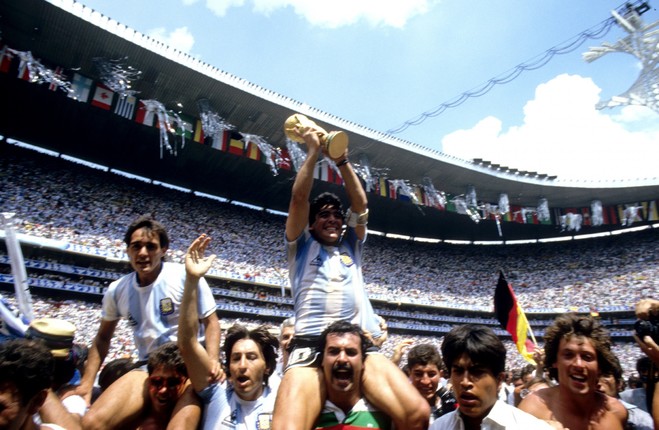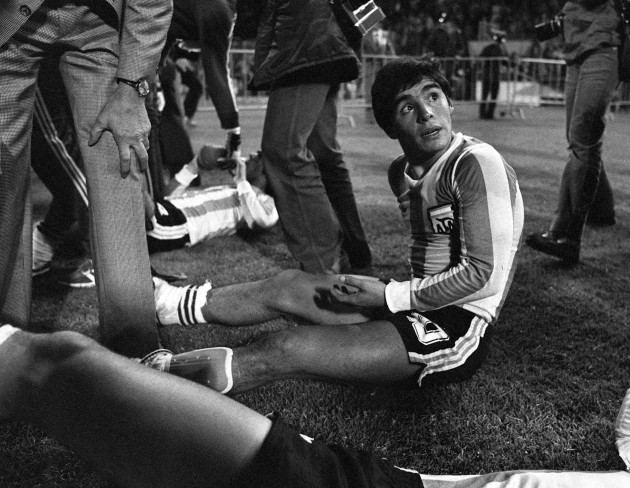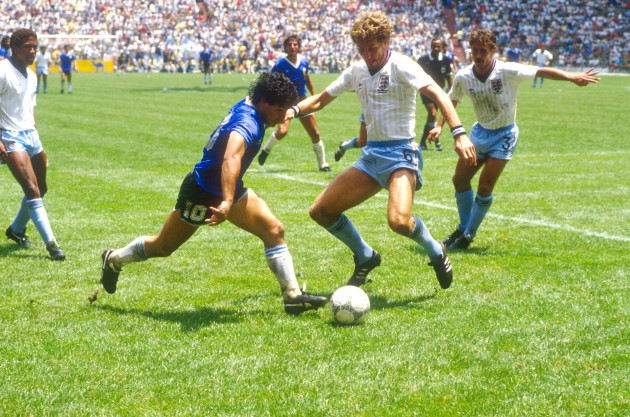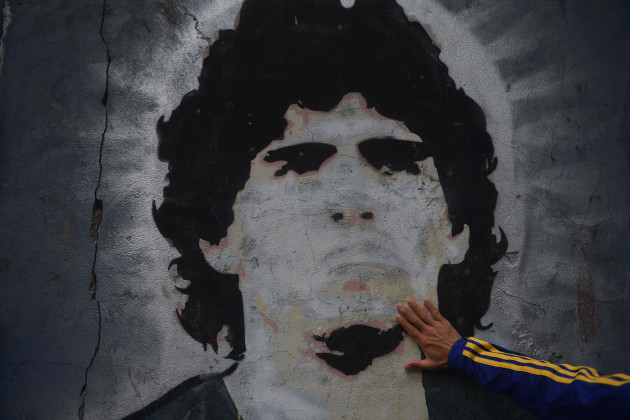CESAR MENOTTI COACHED Argentina to the 1978 World Cup and said lyrically, “to be a footballer means being a privileged interpreter of the feelings and dreams of thousands of people.”
It took eight years for Diego Maradona to prove his point.
Maradona embodied so much of his people and his country that he elevated football to beyond just a game and the World Cup to a level it will perhaps never again reach.
To understand the place of football in Argentina, it’s important to understand El Grafico, a weekly magazine founded in Argentina in 1919. Within two years it had narrowed its broad cultural focus to just sport, from which it then built a culture outward.
The magazine helped to define Argentine impressions of football, fashioning it as a kind of rebuke to the rigid, disciplined visions of the game first brought to them by late Victorian England.
The magazine saw the sport as being changed by the cramped, inner-city barrios in which it was played; possessed by the “less phlegmatic and more restless spirit of the Latin” and so more reliant on the guile and craft of the pibe, or inner-city boy.
This was an identity best expressed through dribbling, a kind of live improvisation.
In The Ball is Round, David Goldblatt prefaces the birth of Maradona with an excerpt from a piece written in 1928 by a famous editor of El Grafico magazine, Borocoto, in which he proposes erecting a statue to the inventor of dribbling.
A pibe with a dirty face, a mane of hair rebelling against the comb; with intelligent, roving, trickster and persuasive eyes and a sparkling gaze that seem to hint at a picaresque laugh.
32 years later, along came Diego Maradona, nicknamed El Pibe de Oro.
El Grafico embraced El Diego – he appeared on the cover a record 134 times – and they published a diary he kept of his games with Ireland, Scotland and England in 1980. (Sadly for our esteem, he mostly remembered the kicking he was given.)
On the flipside, Diego embodied the stories El Grafico had told since its inception.
No player is as identified with a competition as Maradona is with the 1986 World Cup, and this victory much more celebrated in Argentina than the victory under Menotti eight years earlier in spite of their hosting a tournament.
But these tournaments were won by very different Argentinas; the ‘78 World Cup they hosted and then won was effectively propaganda for the murderous military junta; by ‘86 Maradona and his team-mates were representing a country that had returned to a form of democracy three years earlier.
On a recent episode of Behind the Lines, ESPN’s Wright Thompson wondered aloud as to why the ‘86 triumph is held much more dearly than ‘78, and whether Argentina would effectively prefer to celebrate ‘86 twice rather than reckon with the tangled, troubled legacy of ‘78.
There was something more democratic about the win in ‘86: a hard-working, relatively egalitarian team serving the inherent genius of Maradona, he of democratic talents sold by El Grafico.
The quarter-final against England showcased them both: the sly craft of the Hand of God and the delicate genius of the slaloming run.
Maradona himself would sum up the first goal – “football is the game of deceit” – while the economy of Jimmy Magee’s words are appropriate for the second: Different Class.
There was always something subversive in Maradona’s play; he showed against England that he operated independent of the rules governing the rest of us, aloof from both the laws of the game and, quite possibly, of gravity.
While Maradona may not be the greatest player in Argentina’s history, he is certainly the most loved.
In comparison, Messi is treated with a kind of indifference, he is seen more as a product of Europe, at times literally: he moved to Spain as a child as only Barcelona could afford to pay the medical bills he needed to induce growth. The story Argentina sees in Messi is much less romantic than that seen in Diego.
Messi, unlike Maradona, thrived at Barcelona. Instead, Diego found love in Naples, “the perfect place for him” as Liam Brady explained on RTE today.
That insurgency to his character and his game was a perfect fit for Naples, a city looked down upon by the affluent cities of the North. In one of his first games for Napoli, Juventus fans invoked Pompeii and sang with menace, “Wash them with fire.”
Maradona saw Naples as more Argentine than Italian, and when the city staged a World Cup semi-final between the two countries in 1990, Maradona made his vision explicit, rejecting a politician’s call to the city’s people to support Italy.
“For 364 days out of the year you are considered to be foreigners in your own country; today you must do what you want by supporting the Italian team. Instead, I am a Neapolitan 365 days of the year.”
Naples also indulged Maradona’s vices, which led to his wretched exit from the world stage at the 1994 World Cup.
Maradona never won his battle with excess, and they seemed exacerbated by his near-comic restlessness in retirement. Colm Toibin explored these issues with prescience in a 1991 essay for Esquire, after the Argentine police arrested Maradona for possession.
The essay opens with a scene in which Buenos Aires police raid Maradona’s house and find him alone in bed, curled up in a foetal position, and ends with his team-mate Sergio Batista explaining why Diego is falling out of love with football: “He lost his youth. He didn’t have a youth.”
Perhaps that is a condition of passing into myth in real time; Diego was and will forever be El Pibe to his country, but he was forced to grow up too quickly himself, and in Naples and Argentina was forced to shoulder too many “feelings and dreams”, as Menotti might put it.
There were parts of his post-retirement dramas and histrionics, particularly those in view of the world during the 2018 World Cup, that felt like an adult self-consciously trying to live an adolescence.
Now, tragically, Diego lives no more; the Hand of God this time descending.
He leaves behind a trail of immortal moments that can never be equalled, freighted as they were with great national significance.
The rest of us, meanwhile can remember him for his impossible glamour and talent.
Watch back the clip of his second goal against England, and see how long it takes you to notice Jorge Valdano, wearing the number 11 shirt.
Maradona saw him instantly. Having beaten six English players and scored the most iconic goal in the World Cup’s history, Maradona later apologised to Valdano for not passing to him across the box.
Diego Maradona saw more than we ever could, and so we will never see anyone like him again.




